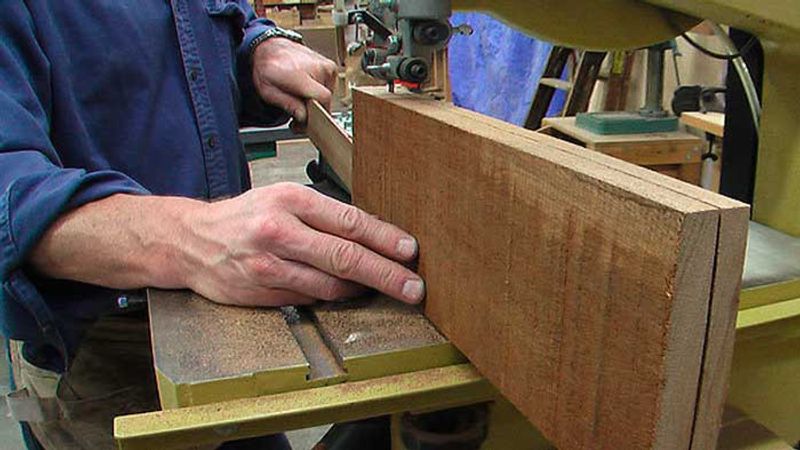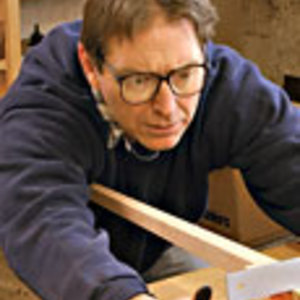Set Up Your Bandsaw for Resawing
Adjust your bandsaw and use the right blade for smooth, straight cuts.

The bandsaw is the ideal tool for resawing thick lumber to produce thin veneers or book-matched panels. The tall throat on a bandsaw (the cutting area between the tabletop and the top bearing where the blade is exposed) can handle wide boards, and the thin blade reduces waste, especially when resawing several veneers from a single board.
For optimal results when resawing on the bandsaw you must make several adjustments to your machine to prevent the blade from drifting or swerving during a cut. In this video, Fine Woodworking contributing editor Gary Rogowski steps through the process. His starts with a good blade and finishes up with a few fine adjustments.







Comments
Video will not play.
It plays - but there's no sound!
2 items:
1. You didn't show how to properly set the fence up for blade drift.
2. You didn't show how to properly align the blade to show how the teeth and gullet are set up in relationship to the center of the wheel.
Video doesn’t play in general (other videos too) while using iPhone
Nice video. You use a 1/2 blade, I have been told to use a 3/4 or 1". Do I need a bigger blade? I will resaw 6-10" material.
Video plays fine for me. My fence is difficult to set for drift (Rikon 10-325) . In order to cut straight, I need to make sure that the blade is tracking such that the deepest part of the gullet is at the center of the tire (3 tooth half inch blade). At this setting, the cut is very clean, and the fence is dead square to the table. If there is any drift, it can be corrected by slightly altering the tracking until it cuts true, leaving the fence where it is. If the wood pulls away from the fence, the band is too far forward on the wheel. If it drifts into the fence, the band is too far back.
I'd like more detailed information. It's nice that your first adjustment gave you a good enough cut. Real life has the 14th adjustment making the good-enough cut!
How do you discover, correct the drift?
Cutting thru a 9" board often gives different drift than a 2" board. Using the right size and type of wood when setting up is vital.
And how do you get rid of Bowing? There's a great pdf file on the Highland woodworking site that is the only place I've ever seen a clear explanation of getting rid of bow (hint: bowing is another form of drift).
More detail please!
Please, let us leave drift in the past. Set up and use your saw correctly.
I agree with schatwin. The video needs more information on what to do when your test cut isn't good enough.
Note to Capiron: thanks for the useful help
Note to Sweeds: The reason I am looking at the video is to learn how to setup and used the saw properly. Your comment tells me to do that does not help anyone setup and use their saw properly.
Log in or create an account to post a comment.
Sign up Log in